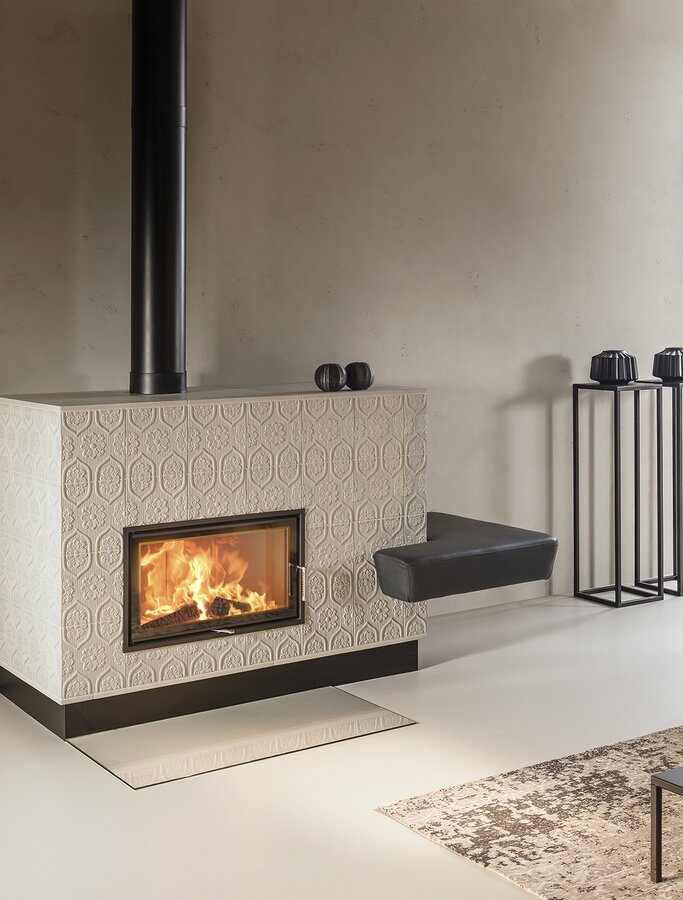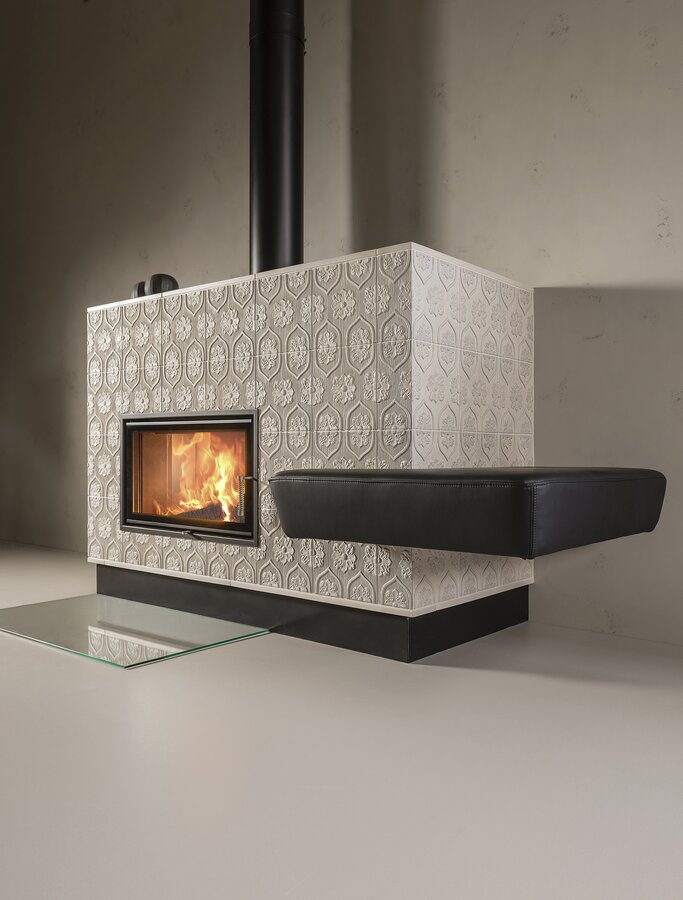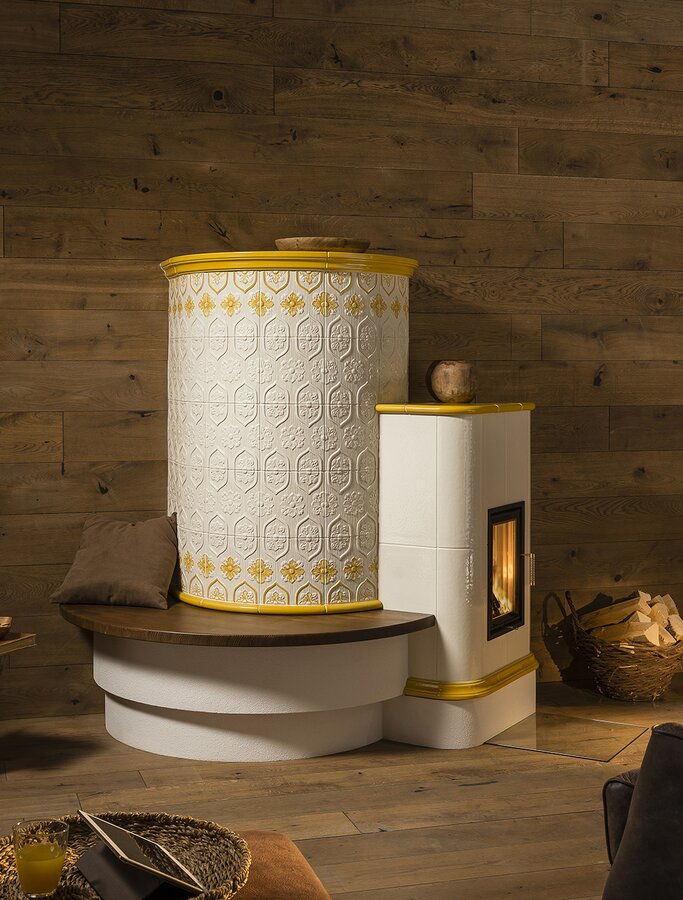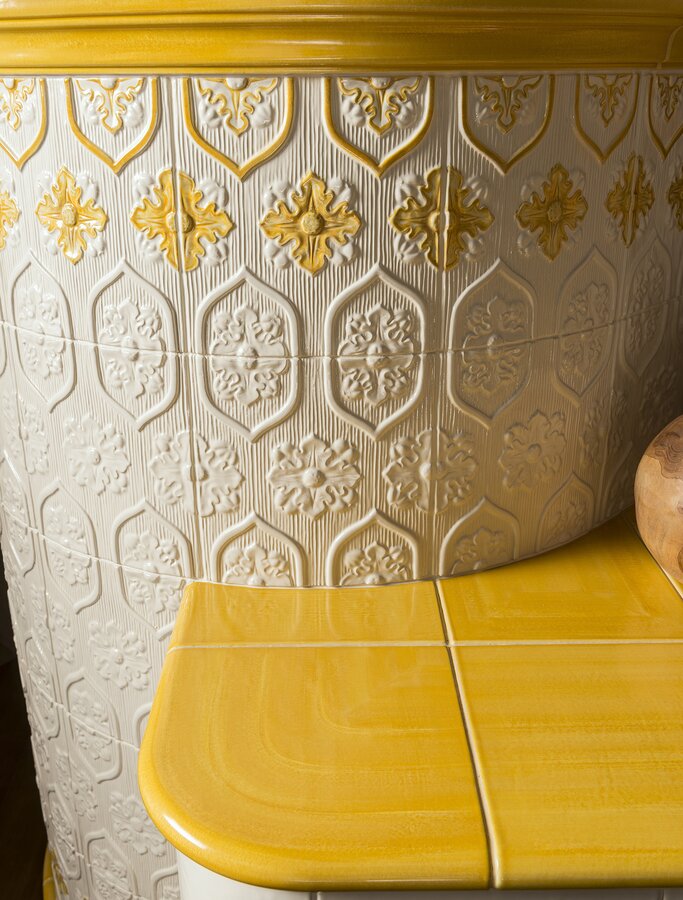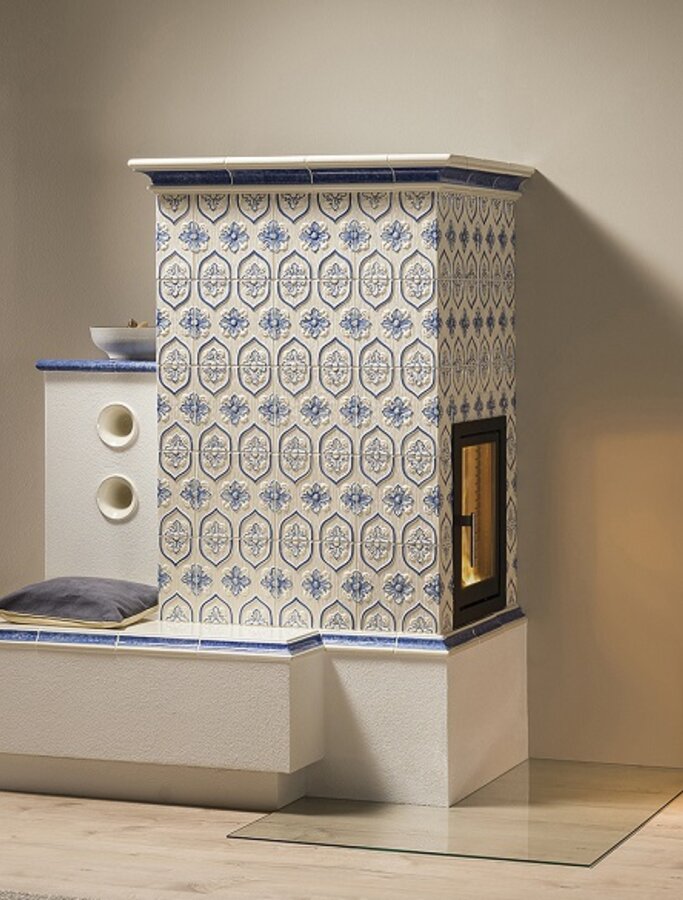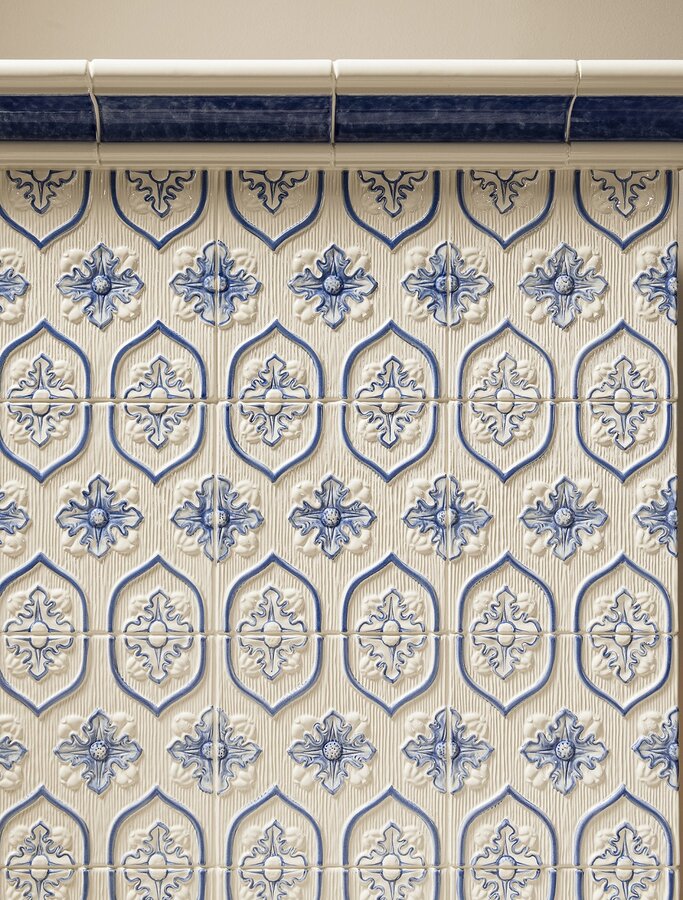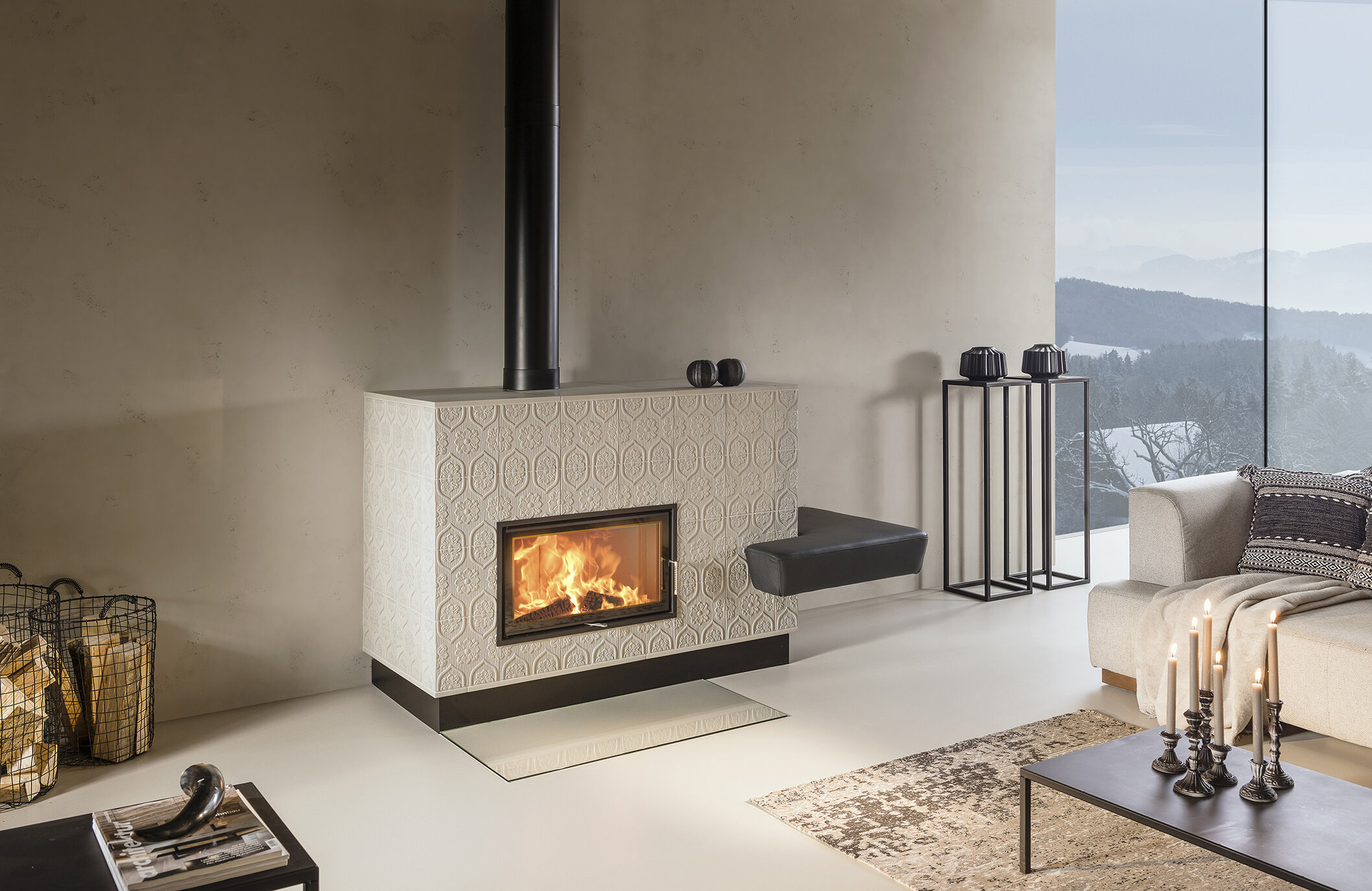
Finding products which arise out of tradition, and then reinterpreting them, is par for the course in many areas. But only a few products have a tradition as long as the "new” “tapestry pattern” (in german: Tapetenmuster) tile. This tile was first made by ceramics manufacturer Sommerhuber in the Renaissance era around 1570. At the time, hunting castles and country houses were fitted out with "tapestry pattern" tiles. In the 1960s and 1970s, this ceramic tile then conquered the city areas. The current Sommerhuber designs combine up-to date technology with traditional handicrafts. Every single tiled stove becomes unique with this elaborate hand-painting today as it was then.
This tradition of manual craftsmanship was implemented in perfection at the Sommerhuber ceramics manufacture both then and now. The "tapestry pattern" tile manages to provide a traditional rural ambience, especially because of the alabaster glazing colour on the elaborately hand-painted tiles. Every individual tiled stove then provides a distinctive feeling of well-being and achieves values which remain over generations and which can be passed on.
The connections between the handicraft tradition and modern decorative styles are particularly fascinating. Additional design possibilities are, for example, an integrated heated bench, a large visible fire and straight lines. Surprisingly up-to-date tiled stoves result thanks to the combination of the traditional "tapestry pattern" tile with these apparently contradictory design elements.
Press inquiries

